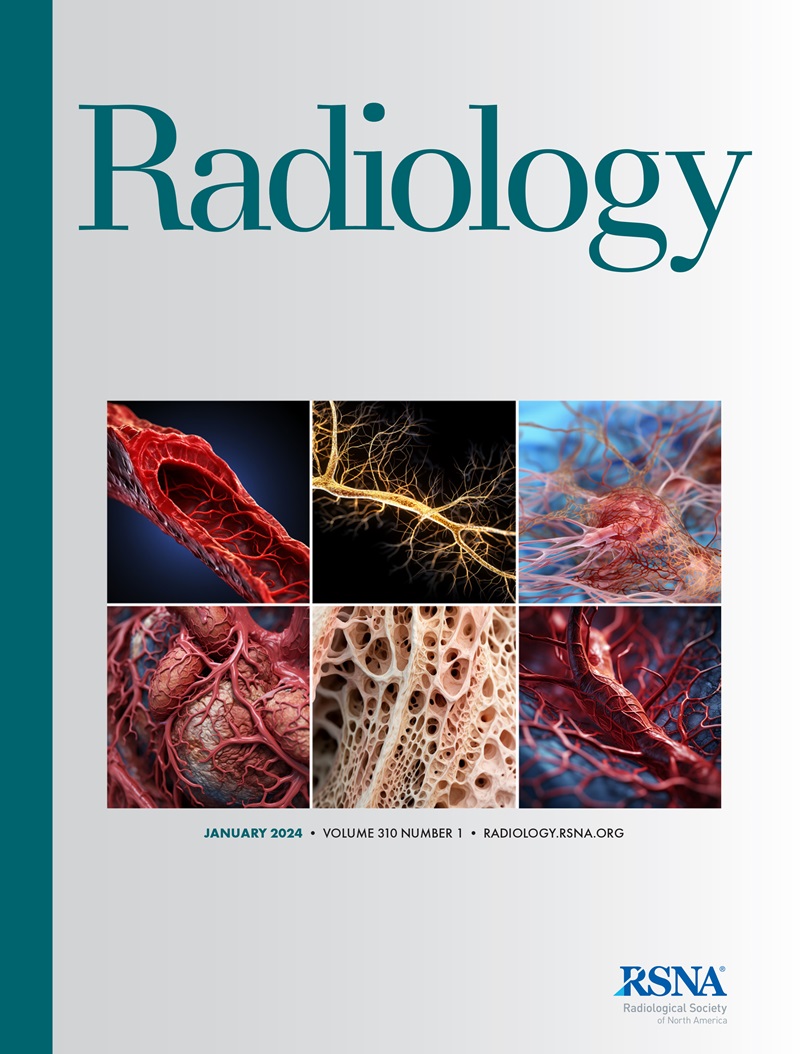Sihui Li, Ruike Chen, Zuozhen Cao, Qinfeng Zhu, Yihan Ma, Keqing Zhu, Zixuan Lin, Dan Wu
求助PDF
{"title":"Microstructural Bias in the Assessment of Periventricular Flow as Revealed in Postmortem Brains.","authors":"Sihui Li, Ruike Chen, Zuozhen Cao, Qinfeng Zhu, Yihan Ma, Keqing Zhu, Zixuan Lin, Dan Wu","doi":"10.1148/radiol.250753","DOIUrl":null,"url":null,"abstract":"<p><p>Background Diffusion tensor imaging (DTI) analysis along the perivascular space (ALPS) has been proposed to assess global glymphatic activity in several neurologic diseases. However, it is unclear whether this measurement is biased by fiber microstructure. Purpose To determine the impact of fiber microstructure on DTI-ALPS in postmortem brains with or without Alzheimer disease (AD) and to evaluate the corrected ALPS in living participants. Materials and Methods From June 2021 to August 2023, amyloid β (Aβ)-positive and Aβ-negative postmortem human brains underwent DTI-ALPS. DTI-ALPS and microstructural asymmetries in the postmortem samples were compared between pathologic groups with use of two-way analysis of variance and correlated with age with use of Pearson correlation. The corrected ALPS index, where the age-dependent and pathologic abnormality-related microstructural effect was removed, was applied to in vivo data from the Alzheimer's Disease Neuroimaging Initiative (ADNI) and was compared among diagnostic groups with use of analysis of covariance controlling for clinical covariates, with a family-wise error-corrected <i>P</i> < .05 considered indicative of a statistically significant difference. Results Eighteen donors with or without AD (mean age, 69 years ± 13 [SD]; 15 men) and 110 ADNI participants (mean age, 76 years ± 6.8; 65 women) were evaluated. Microstructural asymmetry of the projection fibers was higher in Aβ-negative postmortem specimens than Aβ-positive (Aβ-negative mean, 0.98; Aβ-positive mean, 0.95; <i>P</i> = .045), while asymmetry of the association fibers correlated negatively with age (<i>r</i> = -0.48; <i>P</i> = .044). In the ADNI data, the uncorrected ALPS correlated positively with the Preclinical Alzheimer's Cognitive Composite (PACC) score (<i>r</i> = 0.30; <i>P</i> = .001) and negatively with florbetapir (AV45) PET (<i>r</i> = -0.27; <i>P</i> = .005). For the corrected ALPS, the correlation with AV45 PET was not statistically significant (<i>r</i> = -0.18; <i>P</i> = .059), and the correlation with the PACC score (<i>r</i> = 0.26; <i>P</i> = .006) decreased (Steiger test <i>z</i> = 2.99; <i>P</i> = .003). Conclusion Microstructural asymmetry observed in postmortem DTI-ALPS varied with Aβ pathologic characteristics and age, and after the minimization of microstructural bias, the corrected ALPS correlated less with AD markers in vivo. © RSNA, 2025 <i>Supplemental material is available for this article.</i> See also the editorial by Rovira and Pareto in this issue.</p>","PeriodicalId":20896,"journal":{"name":"Radiology","volume":"316 3","pages":"e250753"},"PeriodicalIF":15.2000,"publicationDate":"2025-09-01","publicationTypes":"Journal Article","fieldsOfStudy":null,"isOpenAccess":false,"openAccessPdf":"","citationCount":"0","resultStr":null,"platform":"Semanticscholar","paperid":null,"PeriodicalName":"Radiology","FirstCategoryId":"3","ListUrlMain":"https://doi.org/10.1148/radiol.250753","RegionNum":1,"RegionCategory":"医学","ArticlePicture":[],"TitleCN":null,"AbstractTextCN":null,"PMCID":null,"EPubDate":"","PubModel":"","JCR":"Q1","JCRName":"RADIOLOGY, NUCLEAR MEDICINE & MEDICAL IMAGING","Score":null,"Total":0}
引用次数: 0
引用
批量引用
Abstract
Background Diffusion tensor imaging (DTI) analysis along the perivascular space (ALPS) has been proposed to assess global glymphatic activity in several neurologic diseases. However, it is unclear whether this measurement is biased by fiber microstructure. Purpose To determine the impact of fiber microstructure on DTI-ALPS in postmortem brains with or without Alzheimer disease (AD) and to evaluate the corrected ALPS in living participants. Materials and Methods From June 2021 to August 2023, amyloid β (Aβ)-positive and Aβ-negative postmortem human brains underwent DTI-ALPS. DTI-ALPS and microstructural asymmetries in the postmortem samples were compared between pathologic groups with use of two-way analysis of variance and correlated with age with use of Pearson correlation. The corrected ALPS index, where the age-dependent and pathologic abnormality-related microstructural effect was removed, was applied to in vivo data from the Alzheimer's Disease Neuroimaging Initiative (ADNI) and was compared among diagnostic groups with use of analysis of covariance controlling for clinical covariates, with a family-wise error-corrected P < .05 considered indicative of a statistically significant difference. Results Eighteen donors with or without AD (mean age, 69 years ± 13 [SD]; 15 men) and 110 ADNI participants (mean age, 76 years ± 6.8; 65 women) were evaluated. Microstructural asymmetry of the projection fibers was higher in Aβ-negative postmortem specimens than Aβ-positive (Aβ-negative mean, 0.98; Aβ-positive mean, 0.95; P = .045), while asymmetry of the association fibers correlated negatively with age (r = -0.48; P = .044). In the ADNI data, the uncorrected ALPS correlated positively with the Preclinical Alzheimer's Cognitive Composite (PACC) score (r = 0.30; P = .001) and negatively with florbetapir (AV45) PET (r = -0.27; P = .005). For the corrected ALPS, the correlation with AV45 PET was not statistically significant (r = -0.18; P = .059), and the correlation with the PACC score (r = 0.26; P = .006) decreased (Steiger test z = 2.99; P = .003). Conclusion Microstructural asymmetry observed in postmortem DTI-ALPS varied with Aβ pathologic characteristics and age, and after the minimization of microstructural bias, the corrected ALPS correlated less with AD markers in vivo. © RSNA, 2025 Supplemental material is available for this article. See also the editorial by Rovira and Pareto in this issue.
死后脑在评估心室周围血流中的微结构偏差。
沿血管周围间隙(ALPS)的弥散张量成像(DTI)分析已被提议用于评估几种神经系统疾病的整体淋巴活性。然而,尚不清楚这种测量是否受到纤维微观结构的影响。目的探讨纤维微结构对阿尔茨海默病(AD)患者死后脑组织DTI-ALPS的影响,并评价在世受试者校正后的ALPS。材料与方法2021年6月至2023年8月,对β淀粉样蛋白(Aβ)阳性和Aβ阴性的死后人脑进行DTI-ALPS。采用双向方差分析比较病理组间死后标本的DTI-ALPS和显微结构不对称性,并采用Pearson相关分析与年龄相关。校正后的ALPS指数剔除了年龄依赖性和病理异常相关的显微结构效应,应用于阿尔茨海默病神经影像学计划(ADNI)的体内数据,并使用控制临床协变量的协方差分析在诊断组之间进行比较,家庭误差校正P < 0.05被认为具有统计学意义。结果共纳入18例AD患者(平均年龄69岁±13岁,男性15例)和110例ADNI患者(平均年龄76岁±6.8岁,女性65例)。a β阴性死后标本中投影纤维的微观结构不对称性高于a β阳性(a β阴性平均0.98,a β阳性平均0.95,P = 0.045),而关联纤维的不对称性与年龄呈负相关(r = -0.48, P = 0.044)。在ADNI数据中,未校正的ALPS与临床前阿尔茨海默病认知复合评分(PACC)呈正相关(r = 0.30; P = 0.001),与florbetapir (AV45) PET呈负相关(r = -0.27; P = 0.005)。校正后的ALPS与AV45 PET的相关性无统计学意义(r = -0.18, P = 0.059),与PACC评分的相关性降低(r = 0.26, P = 0.006) (Steiger检验z = 2.99, P = 0.003)。结论死后DTI-ALPS的显微结构不对称性随Aβ病理特征和年龄的变化而变化,显微结构偏差最小化后,校正后的ALPS与体内AD标志物的相关性降低。©RSNA, 2025本文可获得补充材料。参见本期Rovira和Pareto的社论。
本文章由计算机程序翻译,如有差异,请以英文原文为准。

 求助内容:
求助内容: 应助结果提醒方式:
应助结果提醒方式:


